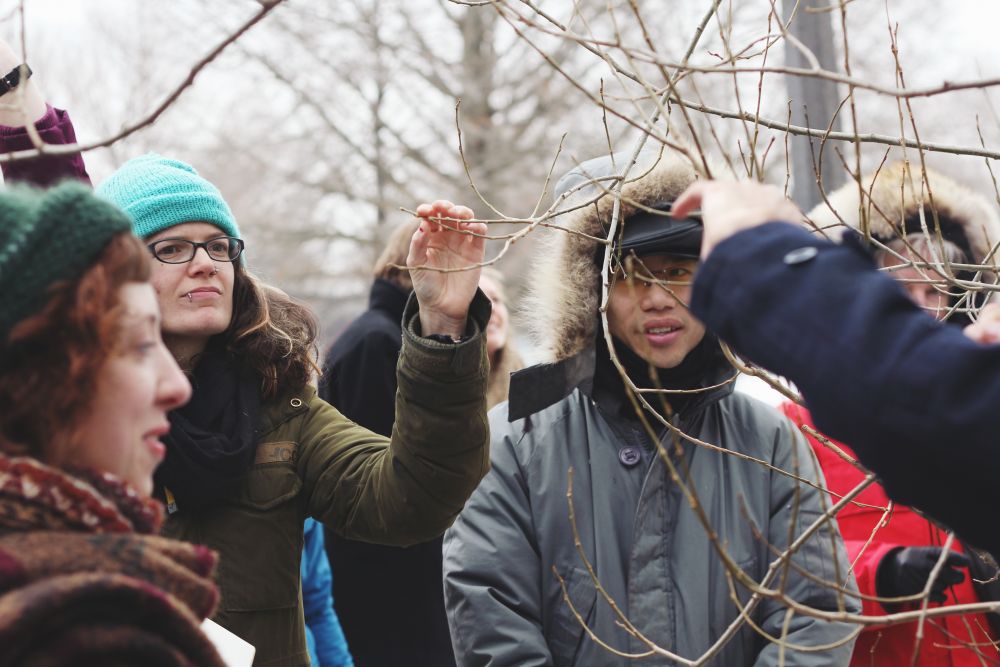The most obvious challenge with identifying species in the winter is the absence of leaves. However, as Mark pointed out, not all trees drop their leaves. We all know evergreens such as spruce, pine and cedar keep their needles all year, but even some beech and oak species hold on to their browned leaves until new ones replace them. Knowing what other characteristics to look for can make winter tree identification a walk in the park.

Mark shared many helpful identifiers: elm trees have a vase-like shape; London plane (Platanus × acerifolia) and American sycamore (Platanus occidentalis) have camouflage-like bark; and bitternut hickories (Carya cordiformis) have bright, sulphur-yellow buds. Two buds at the end of twigs (terminal buds) points to lilac (Syringa vulgaris) or Japanese maple (Acer palmatum), whereas three or more are characteristic of oaks. We learned that ginkgos are remnants of the Jurassic Period and that the big bitternut hickory next to the tennis court is the oldest tree in the park (thanks to the community that rallied to push the court’s construction over a few feet).

I observed a strong sense of community during the tour. People shared stories with me about their summer jobs teaching kids to weave willow twigs into baskets, about how serviceberries are a great addition to a cream cheese icing, and for one young man, about how this tour was the first step to a future career in forestry. Though at first the trees seemed to be the main attraction, the people of this neighbourhood made the event memorable. And their keen interest in community forestry? Well, that was the serviceberry-icing on the cake.

You can take a tree tour by keeping an eye on our event listings here. Don’t miss the next exciting walk through our urban forest!
Jennifer Gagné has been LEAF volunteer since 2011 and recently graduated with a Master of Forest Conservation degree from the University of Toronto. She now works in the field of forest health care and although fascinated by forest insects and diseases, she always welcomes the chance to get out and work with community members. Our Tree Tours are supported by Ontario Power Generation's Biodiversity Program, York Region and the Ontario Trillium Foundation.
